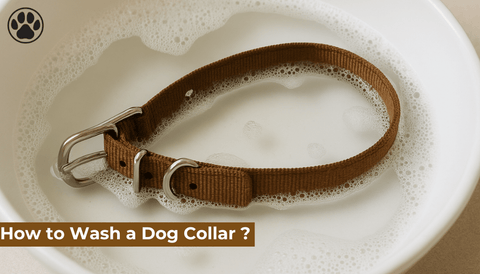
Do Dogs Get Periods?
of reading - words
Dogs are fascinating creatures with unique physiological processes. If you’re a pet owner or considering getting a female dog, you may have wondered: do dogs get periods? While the term “period” is commonly used to describe the menstrual cycle in humans, the equivalent in dogs is referred to as the "estrus cycle" or "heat cycle." This article will explore what this means, how it works, and what you need to know as a responsible pet owner.
What Is the Estrus Cycle?
The estrus cycle, often called the heat cycle, is the reproductive cycle in female dogs. Unlike humans, who have a monthly menstrual cycle, dogs experience their heat cycle less frequently, typically twice a year. The cycle is a natural process during which a female dog becomes receptive to mating.
The Four Stages of the Canine Estrus Cycle
The heat cycle consists of four stages, each with distinct characteristics:
1. Proestrus
This is the beginning of the heat cycle and usually lasts 7 to 10 days. During proestrus:
-
The vulva swells noticeably.
-
A bloody discharge may be present.
-
Male dogs show interest, but the female is not yet receptive to mating.
2. Estrus
Estrus is the fertile stage, lasting around 5 to 14 days. During this phase:
-
The discharge becomes lighter and may appear pinkish.
-
The female becomes receptive to males.
-
Ovulation occurs, making this the optimal time for conception.
3. Diestrus
Diestrus marks the end of the heat cycle and lasts about 60 days. Key features include:
-
Hormonal levels stabilize.
-
If the dog is pregnant, this is the gestation period.
-
If not pregnant, the body returns to its normal state.
4. Anestrus
Anestrus is the resting phase between cycles, lasting approximately four to six months. The dog’s body prepares for the next heat cycle during this time.
Do Dogs Bleed During Their Heat Cycle?
Yes, dogs do bleed during the proestrus phase of their heat cycle. The bleeding is a result of hormonal changes preparing the body for potential mating and pregnancy. The amount of blood varies between dogs; some may have light spotting, while others may bleed more heavily.
It’s essential to provide proper care during this time to keep your dog comfortable and your home clean. Specialized dog diapers or absorbent pads can be used to manage the discharge.
How Often Do Dogs Go Into Heat?
The frequency of heat cycles depends on the dog’s breed, age, and overall health. Smaller breeds may go into heat more frequently, around three times a year, while larger breeds may only experience it once a year. Most dogs, however, go into heat approximately every six months.
What Are the Signs That a Dog Is in Heat?
Recognizing the signs of a heat cycle is crucial for pet owners. Common indicators include:
-
Swollen vulva
-
Bloody or pinkish discharge
-
Increased urination
-
Behavioral changes, such as restlessness or clinginess
-
Attraction to male dogs
How to Care for a Dog in Heat
Caring for a dog during her heat cycle requires attention and preparation. Here are some tips:
-
Maintain Hygiene: Use dog diapers or keep her in a designated area to manage discharge.
-
Provide Comfort: Hormonal changes can make your dog feel uncomfortable. Ensure she has a quiet, comfortable space to rest.
-
Monitor Interactions: Keep her away from male dogs to prevent unwanted pregnancies.
-
Avoid Stressful Situations: Hormonal changes may make your dog more sensitive or anxious. Provide a calm environment.
-
Consult a Veterinarian: If you notice unusual symptoms, such as excessive bleeding or lethargy, seek professional advice.
Spaying and Its Impact on the Estrus Cycle
Spaying, or ovariohysterectomy, is a surgical procedure that removes a female dog’s ovaries and uterus, preventing her from going into heat. This procedure offers several benefits:
-
Eliminates the risk of unwanted pregnancies
-
Reduces the risk of certain cancers and uterine infections
-
May minimize certain behavioral issues associated with heat
Spaying is typically recommended before a dog’s first heat cycle, but it can be performed at any age. Discuss the timing and benefits with your veterinarian to make an informed decision.
Myths About Dogs and Their Heat Cycle
Myth 1: Dogs Have Periods Like Humans
While dogs do experience bleeding during their heat cycle, it is not the same as a human menstrual period. The bleeding in dogs is a sign of fertility preparation rather than shedding of the uterine lining.
Myth 2: Female Dogs Need to Have a Litter Before Being Spayed
There is no scientific evidence to support this claim. In fact, spaying before the first heat cycle can have health benefits, including a reduced risk of mammary cancer.
Myth 3: All Dogs Bleed During Heat
Some dogs may have minimal or no noticeable bleeding, particularly smaller breeds. However, this does not mean they are not in heat.
Understanding Behavioral Changes During Heat
Hormonal shifts during the heat cycle can lead to temporary behavioral changes, such as:
-
Increased clinginess or affection
-
Restlessness or pacing
-
Decreased appetite
-
Marking territory with urine
Being patient and understanding during this time will help your dog feel more secure.
Frequently Asked Questions (FAQ)
1. Do all female dogs get periods? Yes, all intact (unspayed) female dogs experience a heat cycle, which includes bleeding during the proestrus phase.
2. How long does a dog’s heat cycle last? The heat cycle typically lasts about 2 to 4 weeks, depending on the dog.
3. Can I walk my dog when she is in heat? Yes, but keep her on a leash and away from male dogs to prevent unwanted mating.
4. At what age do dogs start their heat cycle? Dogs usually experience their first heat cycle between 6 and 12 months of age, though it can vary by breed.
5. Should I spay my dog to prevent heat cycles? Spaying is an effective way to prevent heat cycles and offers health benefits. Consult your veterinarian to determine the best timing.




